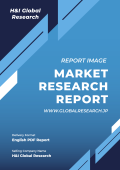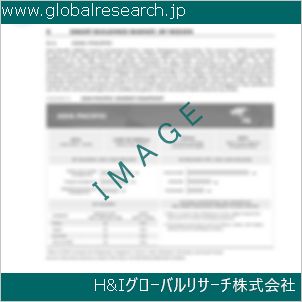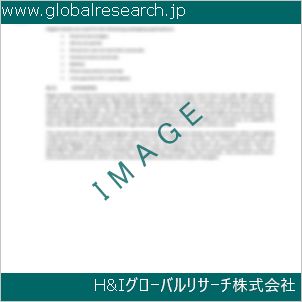1. Executive Summary
1.1. Market Definition and Scope
1.2. Market Segmentation
1.3. Key Research Objectives
1.4. Research Highlights
2. Assumptions and Research Methodology
3. Executive Summary: Global Neuroprotection Market
4. Market Overview
4.1. Market Segmentation
4.1.1. Segment Definition
4.1.2. Industry Evolution / Developments
4.2. Overview
4.3. Market Dynamics
4.3.1. Drivers
4.3.2. Restraints
4.3.3. Opportunities
4.4. Global Neuroprotection Market Analysis and Forecast, 2017-2031
5. Key Insights
5.1. Pipeline Analysis
5.2. Disease Prevalence & Incidence Rate Globally with Key Countries
5.3. COVID-19 Pandemic Impact on Industry
6. Neuroprotection Market Analysis and Forecast, By Product
6.1. Introduction and Definitions
6.2. Key Findings/Developments
6.3. Market Value Forecast, By Product, 2017–2031
6.3.1. Free Radical Trapping Agents (Antioxidants)
6.3.2. Glutamate Antagonists (Anti-excitotoxic Agents)
6.3.3. Apoptosis Inhibitors
6.3.4. Anti-inflammatory Agents
6.3.5. Neurotrophic Factors (NTFs)
6.3.6. Metal Ion Chelators
6.3.7. Stimulants
6.3.8. Others
6.4. Market Attractiveness, By Product
7. Global Neuroprotection Market Analysis and Forecast, by Application
7.1. Introduction and Definitions
7.2. Key Findings/Developments
7.3. Market Value Forecast, by Application, 2017–2031
7.3.1. Prevention
7.3.2. Treatment
7.4. Market Attractiveness, by Application
8. Global Neuroprotection Market Analysis and Forecast, by Region
8.1. Key Findings
8.2. Market Value Forecast, by Region, 2017–2031
8.2.1. North America
8.2.2. Europe
8.2.3. Asia Pacific
8.2.4. Latin America
8.2.5. Middle East & Africa
8.3. Market Attractiveness, by Region
9. North America Neuroprotection Market Analysis and Forecast
9.1. Introduction
9.1.1. Key Findings
9.2. Market Value Forecast, By Product, 2017–2031
9.2.1. Free Radical Trapping Agents (Antioxidants)
9.2.2. Glutamate Antagonists (Anti-excitotoxic Agents)
9.2.3. Apoptosis Inhibitors
9.2.4. Anti-inflammatory Agents
9.2.5. Neurotrophic Factors (NTFs)
9.2.6. Metal Ion Chelators
9.2.7. Stimulants
9.2.8. Others
9.3. Market Value Forecast, by Application, 2017–2031
9.3.1. Prevention
9.3.2. Treatment
9.4. Market Value Forecast, by Country, 2023–2031
9.4.1. U.S.
9.4.2. Canada
9.5. Market Attractiveness Analysis
9.5.1. By Product
9.5.2. By Application
9.5.3. By Country
10. Europe Neuroprotection Market Analysis and Forecast
10.1. Introduction
10.1.1. Key Findings
10.2. Market Value Forecast, By Product, 2017–2031
10.2.1. Free Radical Trapping Agents (Antioxidants)
10.2.2. Glutamate Antagonists (Anti-excitotoxic Agents)
10.2.3. Apoptosis Inhibitors
10.2.4. Anti-inflammatory Agents
10.2.5. Neurotrophic Factors (NTFs)
10.2.6. Metal Ion Chelators
10.2.7. Stimulants
10.2.8. Others
10.3. Market Value Forecast, by Application, 2017–2031
10.3.1. Prevention
10.3.2. Treatment
10.4. Market Value Forecast, by Country/Sub-region, 2017–2031
10.4.1. Germany
10.4.2. U.K.
10.4.3. France
10.4.4. Italy
10.4.5. Spain
10.4.6. Rest of Europe
10.5. Market Attractiveness Analysis
10.5.1. By Product
10.5.2. By Application
10.5.3. By Country/Sub-region
11. Asia Pacific Neuroprotection Market Analysis and Forecast
11.1. Introduction
11.1.1. Key Findings
11.2. Market Value Forecast, By Product, 2017–2031
11.2.1. Free Radical Trapping Agents (Antioxidants)
11.2.2. Glutamate Antagonists (Anti-excitotoxic Agents)
11.2.3. Apoptosis Inhibitors
11.2.4. Anti-inflammatory Agents
11.2.5. Neurotrophic Factors (NTFs)
11.2.6. Metal Ion Chelators
11.2.7. Stimulants
11.2.8. Others
11.3. Market Value Forecast, by Application, 2017–2031
11.3.1. Prevention
11.3.2. Treatment
11.4. Market Value Forecast, by Country/Sub-region, 2017–2031
11.4.1. China
11.4.2. Japan
11.4.3. India
11.4.4. Australia & New Zealand
11.4.5. Rest of Asia Pacific
11.5. Market Attractiveness Analysis
11.5.1. By Product
11.5.2. By Application
11.5.3. By Country/Sub-region
12. Latin America Neuroprotection Market Analysis and Forecast
12.1. Introduction
12.1.1. Key Findings
12.2. Market Value Forecast, By Product, 2017–2031
12.2.1. Free Radical Trapping Agents (Antioxidants)
12.2.2. Glutamate Antagonists (Anti-excitotoxic Agents)
12.2.3. Apoptosis Inhibitors
12.2.4. Anti-inflammatory Agents
12.2.5. Neurotrophic Factors (NTFs)
12.2.6. Metal Ion Chelators
12.2.7. Stimulants
12.2.8. Others
12.3. Market Value Forecast, by Application, 2017–2031
12.3.1. Prevention
12.3.2. Treatment
12.4. Market Value Forecast, by Country/Sub-region, 2017–2031
12.4.1. Brazil
12.4.2. Mexico
12.4.3. Rest of Latin America
12.5. Market Attractiveness Analysis
12.5.1. By Product
12.5.2. By Application
12.5.3. By Country/Sub-region
13. Middle East & Africa Neuroprotection Market Analysis and Forecast
13.1. Introduction
13.1.1. Key Findings
13.2. Market Value Forecast, By Product, 2017–2031
13.2.1. Free Radical Trapping Agents (Antioxidants)
13.2.2. Glutamate Antagonists (Anti-excitotoxic Agents)
13.2.3. Apoptosis Inhibitors
13.2.4. Anti-inflammatory Agents
13.2.5. Neurotrophic Factors (NTFs)
13.2.6. Metal Ion Chelators
13.2.7. Stimulants
13.2.8. Others
13.3. Market Value Forecast, by Application, 2017–2031
13.3.1. Prevention
13.3.2. Treatment
13.4. Market Value Forecast, by Country/Sub-region, 2017–2031
13.4.1. GCC Countries
13.4.2. South Africa
13.4.3. Rest of Middle East & Africa
13.5. Market Attractiveness Analysis
13.5.1. By Product
13.5.2. By Application
13.5.3. By Country/Sub-region
14. Competition Landscape
14.1. Market Player – Competition Matrix (By Tier and Size of Companies)
14.2. Market Share Analysis, by Company (2022)
14.3. Company Profiles
14.3.1. Daiichi Sankyo Company
14.3.1.1. Company Overview (HQ, Business Segments, Employee Strength)
14.3.1.2. Treatment Type Portfolio
14.3.1.3. Financial Overview
14.3.1.4. SWOT Analysis
14.3.1.5. Strategic Overview
14.3.2. Eli Lilly and Company
14.3.2.1. Company Overview (HQ, Business Segments, Employee Strength)
14.3.2.2. Treatment Type Portfolio
14.3.2.3. Financial Overview
14.3.2.4. SWOT Analysis
14.3.2.5. Strategic Overview
14.3.3. AbbVie Inc.
14.3.3.1. Company Overview (HQ, Business Segments, Employee Strength)
14.3.3.2. Treatment Type Portfolio
14.3.3.3. Financial Overview
14.3.3.4. SWOT Analysis
14.3.3.5. Strategic Overview
14.3.4. Dr. Reddy’s Laboratories Ltd.
14.3.4.1. Company Overview (HQ, Business Segments, Employee Strength)
14.3.4.2. Treatment Type Portfolio
14.3.4.3. Financial Overview
14.3.4.4. SWOT Analysis
14.3.4.5. Strategic Overview
14.3.5. Teva Pharmaceutical Industries Ltd.
14.3.5.1. Company Overview (HQ, Business Segments, Employee Strength)
14.3.5.2. Treatment Type Portfolio
14.3.5.3. Financial Overview
14.3.5.4. SWOT Analysis
14.3.5.5. Strategic Overview
14.3.6. Novartis AG
14.3.6.1. Company Overview (HQ, Business Segments, Employee Strength)
14.3.6.2. Treatment Type Portfolio
14.3.6.3. Financial Overview
14.3.6.4. SWOT Analysis
14.3.6.5. Strategic Overview
14.3.7. AstraZeneca plc.
14.3.7.1. Company Overview (HQ, Business Segments, Employee Strength)
14.3.7.2. Treatment Type Portfolio
14.3.7.3. Financial Overview
14.3.7.4. SWOT Analysis
14.3.7.5. Strategic Overview
14.3.8. Astrocyte Pharmaceuticals, Inc.
14.3.8.1. Company Overview (HQ, Business Segments, Employee Strength)
14.3.8.2. Treatment Type Portfolio
14.3.8.3. Financial Overview
14.3.8.4. SWOT Analysis
14.3.8.5. Strategic Overview
14.3.9. F. Hoffmann-La Roche AG
14.3.9.1. Company Overview (HQ, Business Segments, Employee Strength)
14.3.9.2. Treatment Type Portfolio
14.3.9.3. Financial Overview
14.3.9.4. SWOT Analysis
14.3.9.5. Strategic Overview
14.3.10. Biogen Inc.
14.3.10.1. Company Overview (HQ, Business Segments, Employee Strength)
14.3.10.2. Treatment Type Portfolio
14.3.10.3. Financial Overview
14.3.10.4. SWOT Analysis
14.3.10.5. Strategic Overview
❖ 免責事項 ❖
http://www.globalresearch.jp/disclaimer












